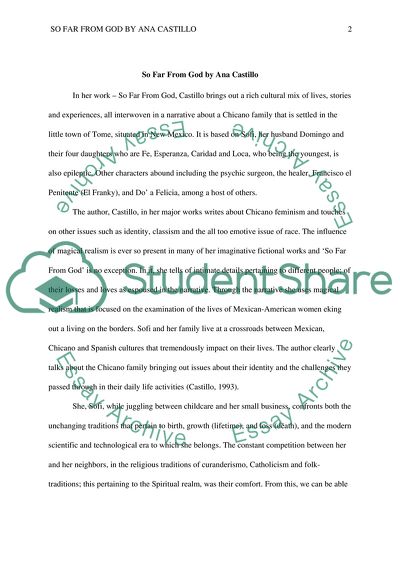Cite this document
(Analysis of So Far From God by Ana Castillo Book Report/Review - 1, n.d.)
Analysis of So Far From God by Ana Castillo Book Report/Review - 1. Retrieved from https://studentshare.org/literature/1772648-so-far-from-god
Analysis of So Far From God by Ana Castillo Book Report/Review - 1. Retrieved from https://studentshare.org/literature/1772648-so-far-from-god
(Analysis of So Far From God by Ana Castillo Book Report/Review - 1)
Analysis of So Far From God by Ana Castillo Book Report/Review - 1. https://studentshare.org/literature/1772648-so-far-from-god.
Analysis of So Far From God by Ana Castillo Book Report/Review - 1. https://studentshare.org/literature/1772648-so-far-from-god.
“Analysis of So Far From God by Ana Castillo Book Report/Review - 1”, n.d. https://studentshare.org/literature/1772648-so-far-from-god.


